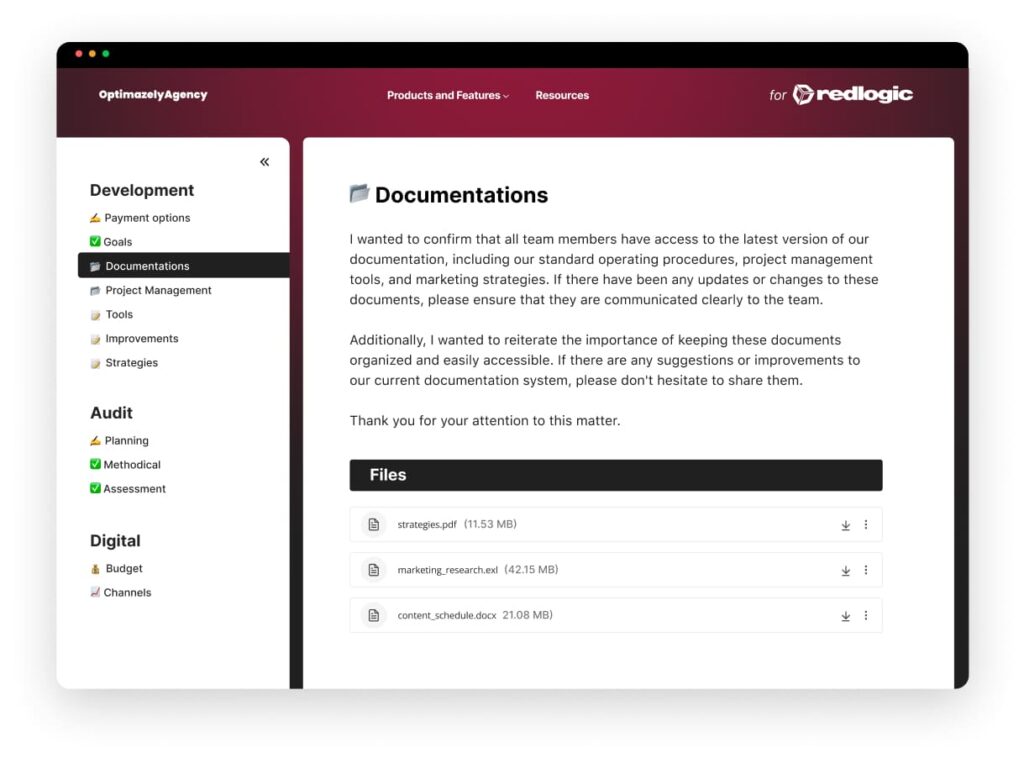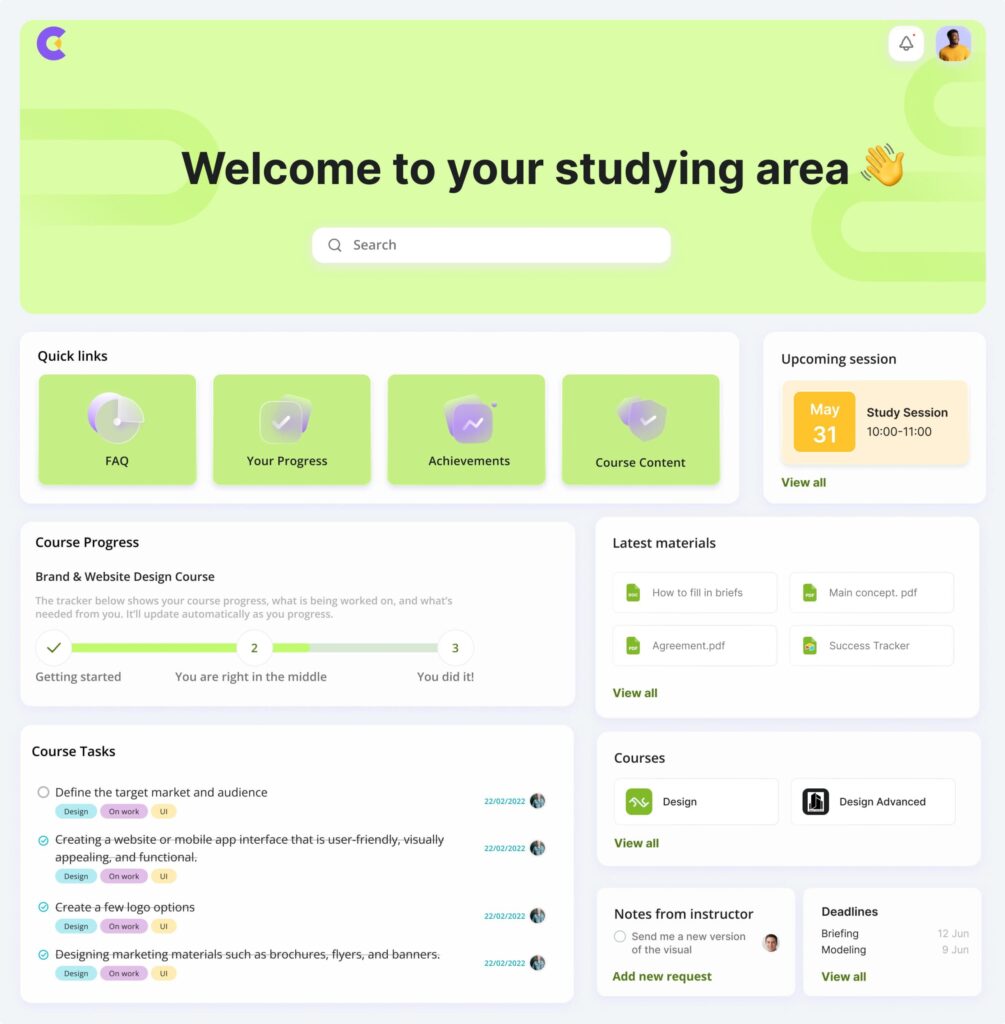
Using and Growing with Institutional Knowledge Management
- October 20, 2023
- 13 Min read
Institutional knowledge management is a term used to describe how companies manage information internally. It’s a critical component of any organization’s success because it allows employees to access information quickly and easily.
To succeed in the future, organizations must embrace institutional knowledge management as part of their culture. This means making sure everyone knows how to use institutional knowledge management effectively and efficiently.
In today’s fast-paced work environment, sharing knowledge is essential. Whether you’re managing a small business or leading a large organization, there are several types of institutional knowledge you need to know about, how to implement it, and how to make it work for you.
If you’re looking to get started using an institutional knowledge management system, you will learn how to implement the right institutional knowledge for your organization and how to use it effectively.
What is Institutional Knowledge?
Institutional knowledge is the collective knowledge and experience of an organization. Institutional knowledge isn’t just about knowing what works. It’s about working together to solve problems, and why things are done a certain way.
When referring to institutional knowledge, it’s all the information that exists within an organization. It includes everything from the best practices and processes of the company to the history of the products they sell.
The goal of institutional knowledge management is to create a shared understanding so that information sharing becomes part of the culture of a company.
Organizations that don’t prioritize knowledge transfer risk losing the context required to develop effective strategies. They lose the ability to harness the collective intelligence of their employees and customers. Without these assets, organizations struggle to adapt to changing environments and grow.
Change is a natural part of growth. Companies that embrace change retain knowledge, while developing staff members. They understand the importance of maintaining the culture of their workforce, values, and identity. This helps them attract, engage, and keep talented individuals.
Knowledge transfer is critical to organizational success. In today’s world, where businesses are becoming increasingly global, digital, and collaborative, information sharing becomes even more important.
Types of Institutional Knowledge
There are three main types of institutional knowledge: tacit, explicit, and implicit.
1. Tacit knowledge
This refers to the skills, abilities, and expertise people have developed over time through experience. These include the ways in which people think, communicate, collaborate, and problem-solve. Tacit knowledge is the kind of knowledge that comes naturally to people who have been doing something for years. Tacit knowledge can be passed on through mentoring relationships, informal training programs, and formal education.
2. Explicit knowledge
This is the kind of information that can be taught. It’s usually written somewhere and available to anyone who needs it. Explicit knowledge is often referred to as “knowledge-based” or “formalized.” It’s defined by its accessibility. Explicit knowledge is easy to find and share. It includes written documents, spreadsheets, presentations, videos, and other forms of documentation.
3. Implicit knowledge
This is the type of knowledge that doesn’t exist anywhere else but inside the minds of those who know it. Implicit knowledge is the type of knowledge that doesn’t exist in a tangible form. Implicit knowledge is the kind of information people need to do their jobs well. It includes skills, attitudes, and behaviors that are learned through observation and practice.
Knowing these three main types of institutional knowledge will help you better understand why knowledge sharing is so important.
The Importance of Institutional Knowledge
There are many reasons why institutional knowledge should be considered a key element of any successful organization.
1. Creates an internal network of experts
Institutional knowledge is a valuable asset that can be leveraged across departments and functions. When employees learn from each other, it streamlines operations and ensures expertise is shared throughout the company.
2. Makes your company more competitive
By leveraging institutional knowledge, you gain a competitive advantage. You become more efficient and agile. Employees are able to solve problems faster and more accurately.
3. Increases employee engagement
Employees who feel valued and appreciated are more motivated to contribute and are more likely to stay at their job longer. When they’re happy, they perform better. They’re also more engaged when they see others benefiting from their contributions.
4. Improves customer service
Customers expect high-quality products and services. If employees aren’t knowledgeable about their company, they won’t be able to respond to customer queries or solve problems efficiently. By providing excellent customer service, you demonstrate your commitment to excellence.
5. Reduces risk
If you fail to leverage institutional knowledge, you run the risk of losing customers, clients, and partners. By investing in training and developing new talent, you’ll ensure your company has the right people on board.
6. Promotes innovation
People are generally more creative when they’re working in a team. An institutional knowledge base provides employees with what they need to collaborate and be creative. Collaboration breeds creativity. When teams openly share information, they create opportunities for collaboration and innovation.
7. Builds trust
Having institutional knowledge builds trust because it demonstrates transparency. People know what to expect from you and they have confidence that you’re doing everything you can to help them succeed. When employees have confidence in one another, they’re less likely to question authority. Trust builds loyalty. Loyalty leads to higher levels of productivity and efficiency.
8. Keeps your staff productive
Knowledge sharing helps employees focus on their tasks instead of searching for answers. When employees are confident they can rely on one another, they’re less distracted and more focused on completing their assignments.
The importance of institutional knowledge cannot be overstated. It’s one of the best ways to help your company stay relevant and continue to progress as things change.
The Benefits of Implementing Institutional Knowledge Management
Institutional knowledge management is a powerful tool that can improve your company’s performance and long-term success.
1. Improves employee onboarding and training
When employees have access to institutional knowledge, they’re more prepared for their roles. This will allow you to harness the potential of employees and help them in their professional development. They will complete tasks more efficiently, which means less time spent learning and more time working.
2. Gives you a competitive edge
You can increase your market share and grow your revenue if you invest in institutional knowledge management. It will enhance creativity and can boost innovation. It can also make your company more responsive to changing demands.
3. Grows your company reputation
Your company’s image is closely tied to its ability to deliver exceptional products and services. When you implement institutional knowledge management, you show your customers that you care about their needs and want to provide the best possible solutions.
4. Helps you attract top talent
People choose jobs based on what they know. If you don’t offer opportunities for growth and advancement, you may lose talented individuals. By implementing institutional knowledge management, you create a positive workplace where employees can thrive and develop professionally. Institutional knowledge management helps you keep top performers by giving them the opportunity to advance within the company.
5. Builds stronger teams
With effective institutional knowledge management, you can build strong teams. Team members will have access to all the necessary resources needed to get the job done. Teams will be more cohesive and collaborative. As a result, your company will operate more smoothly.
6. Increases productivity
Institutional knowledge management can help you reduce costs and streamline processes. You can save money by eliminating redundant steps and reducing errors. Employees will spend less time searching for answers and more time doing productive work.
7. Boosts morale
When employees feel valued and appreciated, they’re more motivated to do their best. They’re also happier and more satisfied with their jobs. A sense of camaraderie develops between team members. This creates an atmosphere of trust and respect.
8. Promotes organizational effectiveness
Institutional knowledge management improves communication among employees. It makes it easier for them to collaborate and work together. The flow of information becomes faster and smoother. This increases efficiency and reduces mistakes.
9. Creates a better customer experience
Customers are increasingly looking for businesses that understand their needs. With institutional knowledge management, you demonstrate that you value your customers’ opinions and feedback. Your customers will appreciate this gesture and respond positively.
10. Makes your company more efficient
Institutional knowledge management helps you identify problems before they become issues. It gives you the chance to resolve issues before they escalate into bigger problems.
11. Improves employee retention
Employees who feel like they belong at their place of employment are more likely to stay longer than those who don’t. Institutional knowledge management lets your employees know that you value their contributions and recognize their efforts.
12. Saves time and money
Institutional knowledge management saves time and money. Instead of spending hours searching through files and databases, employees can find the information they need right away. This frees up valuable time so that employees can focus on other tasks.
The benefits of institutional knowledge management are worth the effort needed to implement it. You should consider implementing this system into your company’s workflow so you can reap the rewards.
How Can Companies Document Institutional Knowledge?

While institutional knowledge will benefit all companies, getting started and documenting it isn’t easy. Here are a few steps you can take to document institutional knowledge.
1. Create an internal wiki
An internal wiki is a web application that lets users collaborate online. A wiki is ideal for storing institutional knowledge because it’s easy to update and edit. The wiki can be accessed from anywhere at anytime.
2. Communicate the existence of a knowledge base
To ensure employees know about the knowledge wiki, leaders need to communicate the importance of using it. This can be done during meetings, through company communication, such as an email newsletter, and make it part of the onboarding process of new employees.
3. Provide ongoing training
Having subject matter experts or dedicated trainers available to answer questions is important when using institutional knowledge. They can guide new hires through the process and ensure that they understand how to use the tools properly.
4. Make documentation accessible
Ensure all team members have access to institutional knowledge. Make sure everyone knows how to log into the wiki and navigate through it. Also, make sure they understand how to add content and edit existing pages.
5. Keep documentation current
Documentation doesn’t need to be static. Update it regularly to reflect changes in the industry or company policies. This way, you’ll always have the most up-to-date information available.
6. Share your knowledge
Sharing your institutional knowledge with others will help them learn faster. They’ll also appreciate knowing that you’ve invested time and effort into creating it.
Once you document institutional knowledge, it’s then about making sure people know how to use it.
How to Use Institutional Knowledge in the Workplace
A lot of time and effort may go into creating an institutional knowledge management system. To reap the full benefits of it, employees need to know how to use it. Here are ideas that will help embed institutional knowledge in your workplace.
1. Have a designated person who manages the knowledge base
This individual should be responsible for maintaining the knowledge base and ensuring its accuracy. He or she should also be able to provide guidance to other employees who want to contribute.
2. Encourage collaboration
Encouraging collaboration between different departments will help keep the knowledge base updated. For example, if there’s a change in accounting procedures, someone in human resources could share the news with those in marketing.
3. Give people ownership over the knowledge base
Giving people ownership over the knowledge will encourage them to contribute. When they feel like they’re contributing to something meaningful, they’ll be more likely to continue to contribute.
4. Reward good contributions
Rewarding good contributors will motivate them to continue providing valuable information. You can give out awards or recognition for outstanding contributions. The aim is to encourage collaboration.
5. Create a culture of learning
Institutional knowledge management isn’t just useful for employees; it’s also beneficial for customers and partners. If you create a culture where everyone learns together, you’ll build trust among your stakeholders.
6. Communicate the value of institutional knowledge
Ensure your employees know why institutional knowledge matters. Explain what it does, how it helps them do their jobs better, and why it’s essential to stay competitive.
7. Be transparent
Be open about the fact that you’re using institutional knowledge management. Let people know that you’re taking steps to improve organizational performance. Transparency helps maintain credibility. Employees will respect you more if they see you being honest and open about what you’re doing.
8. Integrate institutional knowledge into everyday activities
Use institutional knowledge to inform decisions that affect your company. For example, if you decide to sell a product, you might consider whether the price is fair based on market data.
9. Build a community
Building a community around institutional knowledge will allow employees to get feedback from each other. This will encourage creativity and help them improve their performance.
10. Document everything and keep things simple
Make sure all relevant documents are stored in your wiki so employees don’t have to search through multiple locations. Keep documents simple. Make sure the content is easy to understand.
Using institutional knowledge in your workplace will make it easier for your employees to perform their jobs. They’ll be able to find answers faster and more accurately, which will increase productivity and efficiency. That will ultimately lead to higher profits.
Building an Institutional Knowledge Base in FuseBase

To create an institutional knowledge base, you need to:
- Create documents easily and in multiple formats.
- Provide users with quick and easy ways to find information.
- Allow users to collaborate on documents.
- Give users control over document permissions.
- Integrate documents into workflow processes.
- Manage user accounts and permissions.
- Enable users to edit documents directly.
- Create templates for common tasks.
- Automate document creation and editing.
- Support versioning and history tracking.
- Store documents securely.
FuseBase provides these capabilities, which makes it ideal for creating an institutional knowledge base. With FuseBase, you can:
- Create super documents with information in many formats, such as text, videos, audios, images, tables, PDF documents, or other file attachments.
- Set up workspaces, which means information can be categorized by departments or functions in your organization.
- Use folders and sub-folders to structure your information, which will make it easier to find what you need.
- Share documents or pages via shareable links.
- Customize your account and workspaces with your organization’s colors and branding, as there is a full white label option.
- Control who has access to what information at the workspace, folder, or notes level. You can set passwords on your notes and folders and also set up user permissions.
- Access version history, which gives you the option to revert to an earlier version of any document.
- Add comments to notes or documents to provide feedback and enhance collaboration.
- Set up automation and connect with your favorite apps to streamline the flow of information.
Keep your team ready by building your knowledge base with FuseBase
When you introduce institutional knowledge into your organization, you will need to follow change management practice. Find out the steps to effective change management.
Since your institutional knowledge base will be online, you will get the most value from it through better collaboration practices. Find out how online collaboration can help streamline your business.
If you found this article helpful, please share it so others can benefit too.
Subscribe to FuseBase on LinkedIn to learn about our updates and new articles.
Found it useful? Share the article with your community
Subscribe to our blog!
Get weekly tips and insights on how to grow your business